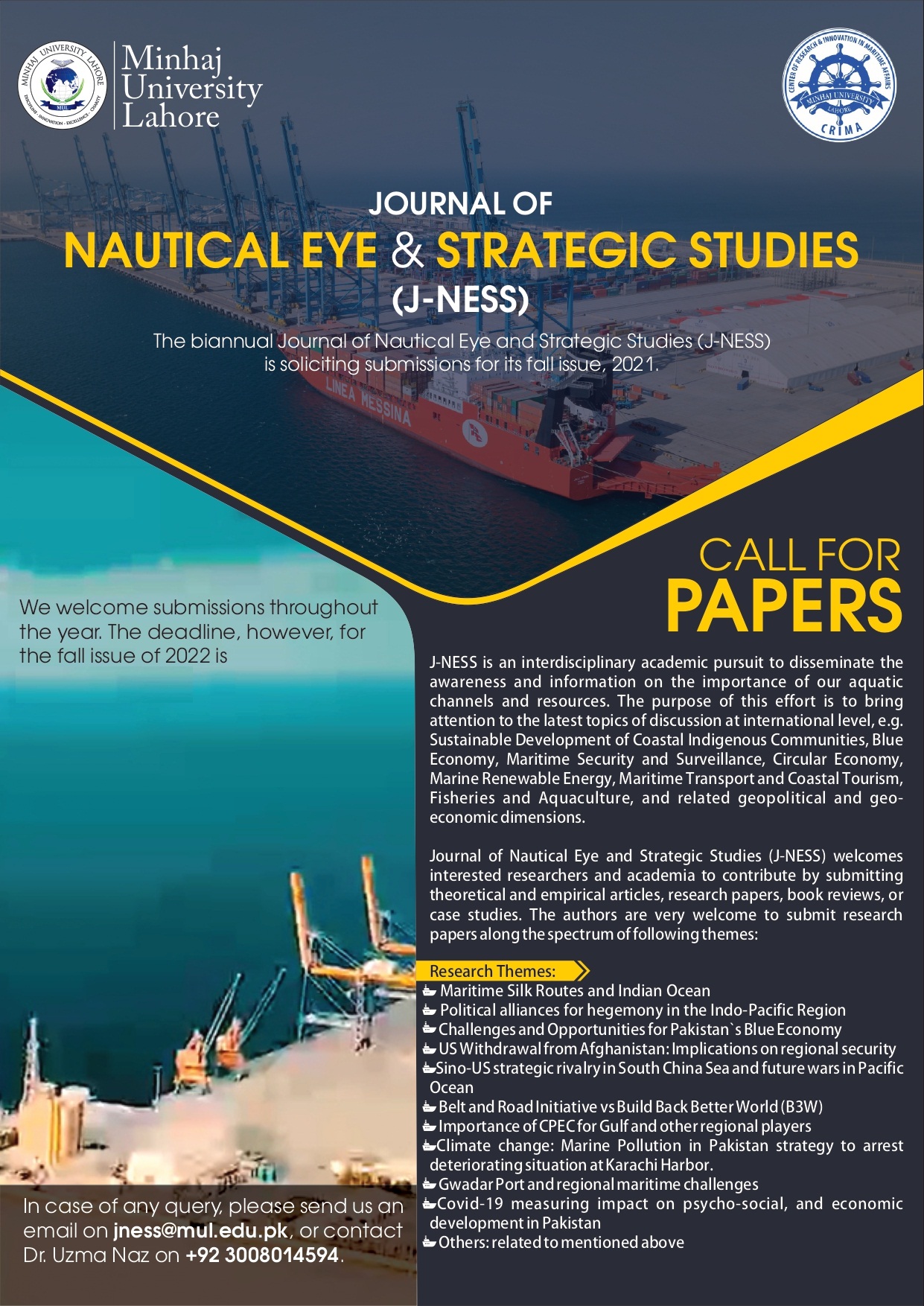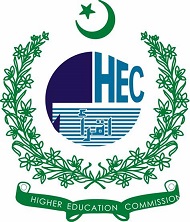BRI Economic Corridors: Implications for Future Economic Development in Global Recession
DOI:
https://doi.org/10.58932/MULG0012Keywords:
China, BRI, Economic Corridors, Sustainable Development, Global RecessionAbstract
This article explores the implications of the Belt and Road Initiative (BRI) Economic Corridors for future economic development, especially in the context of the current global recession. The BRI, launched by China in 2013, aims to connect Asia, Europe, and Africa through a network of infrastructure projects, including the development of economic corridors. These corridors are expected to boost trade, investment, and economic growth in the participating countries. The article provides an overview of the BRI and its economic corridors and discusses the potential benefits and challenges of the initiative. It analyzes the impact of the global recession on the BRI and how the initiative can help mitigate the effects of the crisis. The article also examines the role of the BRI in promoting sustainable development and addressing environmental concerns. A qualitative research methodology will be implemented based on a market analysis, expert interpretations, literature review, and assessment of online sources. Moreover, the article will cover the politico-economic considerations, infrastructure development opportunities, shipping and transportation facilitation, along with trade facilitation and opportunities along the corridors. The article recommends that policymakers and stakeholders work together to maximize the benefits of the BRI while minimizing the risks and negative impacts. The study concludes that the BRI Economic Corridors have the potential to become a major driver of economic development, particularly in the face of the current global recession. However, the success of the initiative will depend on addressing several challenges, including governance, financing, and environmental sustainability.
References
Abid, M. (2021). Gwadar Port and CPEC: Connecting China with Middle East. MIDDLE EAST REVIEW, 18-36.
Anwar, T., & Ahmad, I. (2020). ANALYZING THE STRATEGIC AND ECONOMIC PROSPECTS OF CHINA-PAKISTAN ECONOMIC CORRIDOR. Central Asia Journal, 87, 105-115.
Aziz, F., & Sarwar, S. (2021). Prospects of China's Belt and Road Initiative (BRI) in Central Asia: Challenges and opportunities. Journal of Contemporary China, 30(125), 1-17.
Aziz, I., Raza, S., Bhatti, M. K., Ali, S., & Tahir, W. (2020). China Pakistan Economic Corridor Energy Projects in Light of Sustainable Development. Pakistan Journal of Engineering and Technology, 3(2), 120-125.
Bartos, O. J., & Wehr, P. (2002). Using Conflict Theory. Cambridge, United Kingdom: Cambridge University Press.
Battamo, A. Y. (2021). Mapping socio-ecological resilience along the seven economic corridors of the Belt and Road Initiative. Journal of Cleaner Production, 127341.
Campbell, B. F., & Wang, J. (2021). Is There Such a Thing as a Confucianist Chinese Foreign Policy? A Case Study of the Belt and Road Initiative. In B. Futák-Campbell, Globalizing Regionalism and International Relations (pp. 153-180). Bristol, UK: Bristol University Press.
Chakma, B., & Dai, X. (2022). The Belt and Road Initiative and the Politics of Connectivity: Sino-Indian Rivalry in the 21st Century. Singapore: Springer Nature Singapore Private Limited.
Chan, G. (2020). China’s Maritime Silk Road: Advancing Global Development? Cheltenham: Edward Elgar Publishing.
Clifford, P. G. (2021). The China Paradox: At the Front Line of Economic Transformation. Berlin, Germany: De Gruyter.
Demiryol, T. (2019). Political Economy of Connectivity: China’s Belt and Road Initiative. Proceedings of the 13th International RAIS Conference on Social Sciences and Humanities (pp. 168-180). Washington, USA: Scientia Moralitas Research Institute.
HONGYUAN, Z. (2022). Problems and prospects of the project of china-kyrgyzstan-uzbekistan railway. Oriental Studies, 1(3), 104-112.
Jones, L., & Zeng, J. (2019). Understanding China’s ‘Belt and Road Initiative’: beyond ‘grand strategy’ to a state transformation analysis. Third World Quarterly, 40(8), 1415-1439.
Khan, Z., Changgang, G., Afzaal, M., Ahmad, R., & Issack, S. A. (2020). Debunking Criticism on the China-Pakistan Economic Corridor. The Chinese Economy, 53(6), 477-487.
Kumar, S. (2023). China’s BRI in Different Regions of the World: Cooperation, Contradictions and Concerns. Oxfordshire, UK: Taylor & Francis.
Leal-Arcas, R. (2022). Challenges and Oppertunities in the EU-China Trade Relations. In K. Young-chan, China and the Belt and Road Initiative Trade Relationships, Business Opportunities and Political Impacts (pp. 35-54). New York : Springer International Publishing.
Ma, S. (2022). Growth effects of economic integration: New evidence from the Belt and Road Initiative. Economic Analysis and Policy, 31, 753-767.
NEDOPIL, C. (2021). China’s Investments in the Belt and Road. Shanghai, China: Green Finance & Development Center, FISF Fudan University.
Nelson, R. M., & Weiss, M. A. (2021). Multilateral Development Banks: Overview and Issues for Congress. Washington: Congressional Research Service.
Niedermaier, M., Perić, A., Scholl, ., Zürich, E., & CH, Z. (2018). THE BALKAN SECTION OF THE ORIENT/EAST-MED CORRIDOR:. European Transport Conference (pp. 1-10). Dublin: The European Transport Conference (ETC) .
OECD. (2018). China's Belt and Road Initiative in the Global Trade, Investment and Finance Landscape. Paris, France: Organisation for Economic Co-operation and Development (OECD).
Park, C.-Y., Petri, P. A., & Plummer, M. G. (2021). The Economics of Conflict and Cooperation in the Asia-Pacific: RCEP, CPTPP and the US-China Trade War. East Asian Economic Review , 25(3), 233-272.
Pomfret, R. (2019). The Eurasian Land Bridge: linking regional value chains along the New Silk Road. Cambridge Journal of Regions, Economy and Society, 12(1), 45–56.
Rab, A., & Zhilong, H. (2019). China and Shanghai Cooperation Organization (SCO): Belt and Road Initiative (BRI) Perspectives. International Journal of Humanities and Social Science , 9(2), 166-171.
Rahman, Z. U., & Naeem, M. (2022). The Geo-Economics and Geopolitical Significance of Gwadar Port in the Changing Maritime Scenario. FWU Journal of Social Sciences, 16(4), 121-132.
Rencz, F. (2019). THE BRI IN EUROPE AND THE BUDAPEST-BELGRADE RAILWAY LINK. Brussel, Belgium: EIAS.
Saud, A., & Arif, K. (2020). US-China Trade War and Implications for BRI. Strategic Studies, 40(1), 1-19.
Schulhof, V., Vuuren, D. v., & Kirchherr, J. (2022). The Belt and Road Initiative (BRI): What Will it Look Like in the Future? Technological Forecasting and Social Change, 175, 1-17.
Shahid, M., & Yousaf, S. (2020). A geopolitical study of China's Belt and Road Initiative (BRI) and CPEC: Implications for Pakistan and the region. Asian Journal of Political Science, 28(3), 282-299.
Shahriar, S. (2019). The Belt and Road initiative: what will china offer the world in its rise? Asian Journal of Political Science, 27(1), 1-5.
Twillert, N. v., & Vega, S. H. (2021). Risk or opportunity? The Belt and Road Initiative and the role of debt in the China-Central Asia-West Asia Economic Corridor. Eurasian Geography and Economics, 1-13.
Williams, R. D. (2020). INTERNATIONAL LAW WITH CHINESE CHARACTERISTICS: BEIJING AND THE “RULES-BASED” GLOBAL ORDER. Washington: The Brookings Institution.
Yildiran, M. (2019). The Chinese Vision of BRI and Its Effects on Turkey and West Asia. In J. Syed, & Y. Ying, China’s Belt and Road Initiative in a Global Context (pp. 211–234). Cham: Palgrave Macmillan.
Zhai, F. (2018). China’s belt and road initiative: A preliminary quantitative assessment. Journal of Asian Economics, 55, 84-92.
Zhang, L., & Bai, W. (2020). Risk Assessment of China’s Natural Gas Importation: A Supply Chain Perspective. SAGE Open Journal, 1-20.
Zhao, J., & Lee, J. (2021). The Belt and Road Initiative, Asian infrastructure investment bank, and the role of enterprise heterogeneity in China’s outward foreign direct investment. Post-Communist Economies, 33(4), 379-401.
Zhao, M. (2021). The Belt and Road Initiative and China–US strategic competition. China Int Strategy Rev, 3(2), 248–260.
ZHENG, Y., & ZHANG, C. (2016). The Belt and Road Initiative and China's Grand Diplomacy. In I. f. Studies, International Strategic Relations and China's National Security: World at the Crossroads (Vol. 2, pp. 309-331). China: Institute for Strategic Studies, National Defense University of People's Liberation Army China.
Downloads
Published
How to Cite
Issue
Section
License
Copyright (c) 2023 Journal of Nautical Eye and Strategic Studies

This work is licensed under a Creative Commons Attribution-NonCommercial 4.0 International License.










